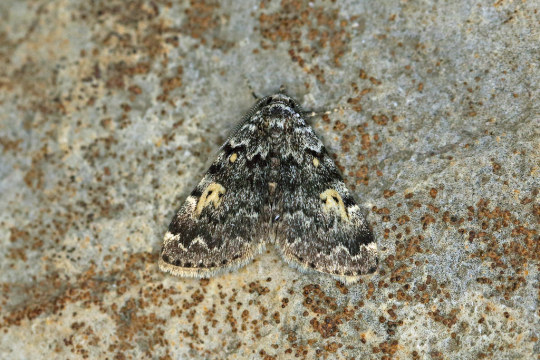#herminiinae
Explore tagged Tumblr posts
Photo


Index Entry - Hydrillodes lentalis
Taxonomy: Superfamily Noctuoidea; Family Erebidae; Subfamily Herminiinae; Genus Hydrillodes
Food Plant: Dead Leaves.
Species Notes “The species in this genus are very similar, and are still the subject of review.” Can be found in Queensland and Norfolk Island, Australia. Can also be found on the Andaman Islands, India, Hong Kong, and Japan.
#Hydrillodes lentalis#Hypochalcia repugnalis#Hydrillodes genus#Erebidae#herminiinae#index#index entry#moths#moths tw#mothblr#moth#Lepidoptera#lepidopterophobia#lepidopterology#bugblr#bugs tw#bugs#insecta#insects#insect#insectblr#insects tw#entomology#adult moth#adult form#arthropoda#arthropods
26 notes
·
View notes
Text





13 notes
·
View notes
Photo

08835 Idia calvaria, Vranja, Croatia by Terathopius https://flic.kr/p/2iEJgYC
5 notes
·
View notes
Photo

American Idia, Idia americalis (by me)
#American Idia#Idia americalis#Idia#Herminiinae#Erebidae#Noctuoidea#Lepidoptera#Insecta#Hexapoda#Arthropoda#insects#moth#Middlesex County#New Jersey#mine
13 notes
·
View notes
Photo

Some type of Renia, found on my storm door.
#lepidoptera#moth#noctuoidea#erebidae#herminiinae#litter moth#renia#insect#new jersey#middlesex county
23 notes
·
View notes
Photo




Glossy Black Idia Moth - Idia lubricalis
I think this will round out the nighttime posts for now, but rest assured, if all goes according to plan, there’ll be a few more to come in the future. For showcase today, we have a Moth that might look somewhat plain at first, but upon closer inspection boasts a subtle wave pattern across its wings. When flying around in the dark, this may not be seen, but thanks to the flash, the pattern is clearly visible and beautiful to see. Not only that, but if you observe Picture 4, there’s a clear shot of the Moth’s eye as well and the spines on its legs. This Moth is positively chock full of fine details! One detail that one should take in is the spots and bands that linger outside the wave patterning on the wings. Unlike last week’s post insect, the Greater Yellow Underwing, this moth is much easier to form an successful identification.
The Glossy Moth does have one similar looking specie: I. scobialis - The Smoky Idia Moth. According to Bugguide, this specie is larger than I. scobialis and has a paler hindwing compared to the forewing. There is another small distinction that might hold some weight; near the base of the forewing of the Glossy Moth, there is a dot, and further down from that is a curved “c” shaped marking. The Smoky Moth’s markings seem to resemble hyphens on most to the specimens found on there. There's always variation to consider, so be sure to carefully observe before identification. Otherwise you might accidentally mistaken an Owlet Moth for a Litter Moth, and this Moth is a Litter Moth (Herminiinae - a subfamily of Erebidae)
Pictures were taken on June 24, 2019 with a Samsung Galaxy S4
#jonny’s insect catalogue#insect#moth#glossy black idia moth#lepidoptera#litter moth#toronto#june2019#2019#ontario insect#entomology#nature#invertebrates#arthropods#photography#animals
0 notes
Text


11 notes
·
View notes
Photo


𝑨𝒅𝒓𝒂𝒑𝒔𝒂 𝒂𝒃𝒍𝒖𝒂𝒍𝒊𝒔
Order Lepidoptera Superfamily Noctuoidea Family Erebidae Subfamily Herminiinae Genus Adrapsa
The Adult moth is pictured above. It has a wing span of about 3CM.
The Larval stage has yet to be found.
This species is found in these Australian states:
N.T
QLD.
And outside Australia:
Hong Kong
Japan
Nepal
Taiwan
20/12/20, source - RatteJak
#index#adult form#adrapsa ablualis#Adrapsa#herminiinae#Erebidae#Noctuoidea#Entomology#Lepidoptera#lepidopterophobia#bugs#bugblr#bugs tw#insects#insecta#insectblr#insects tw#moth#moths#mothblr#moths tw#arthropods#arthropoda
2 notes
·
View notes
Photo

Morbid Owlet, Chytolita morbidalis (by me)
#Morbid Owlet#Chytolita morbidalis#Chytolita#Herminiinae#Erebidae#Noctuoidea#Lepidoptera#Insecta#Hexapoda#Arthropoda#moth#insects#spring#Mahlon Dickerson Reservation#Morris County#New Jersey#mine
15 notes
·
View notes
Photo

Smoky Idia, Idia scobialis (by me)
#Smoky Idia#Idia scobialis#Idia#Herminiinae#Erebidae#Noctuoidea#Lepidoptera#Insecta#Hexapoda#Arthropoda#moth#insects#National Moth Week#summer#Highland Park#Middlesex County#New Jersey#mine
23 notes
·
View notes
Photo

Grayish Zanclognatha (by Dendroica cerulea)
Zanclognatha pedipilalis.
#Grayish Zanclognatha#Zanclognatha pedipilalis#Zanclognatha#Herminiinae#Erebidae#Noctuoidea#Lepidoptera#Insecta#Hexapoda#Arthropoda#insects#moth#spring#Highland Park Meadows#Highland Park#Middlesex County#New Jersey#mine
57 notes
·
View notes